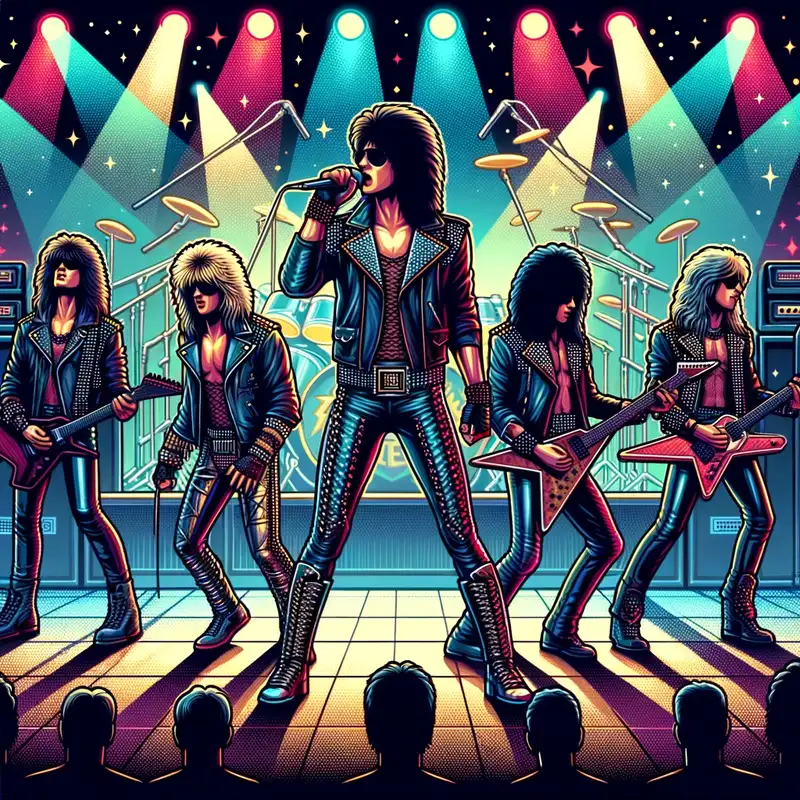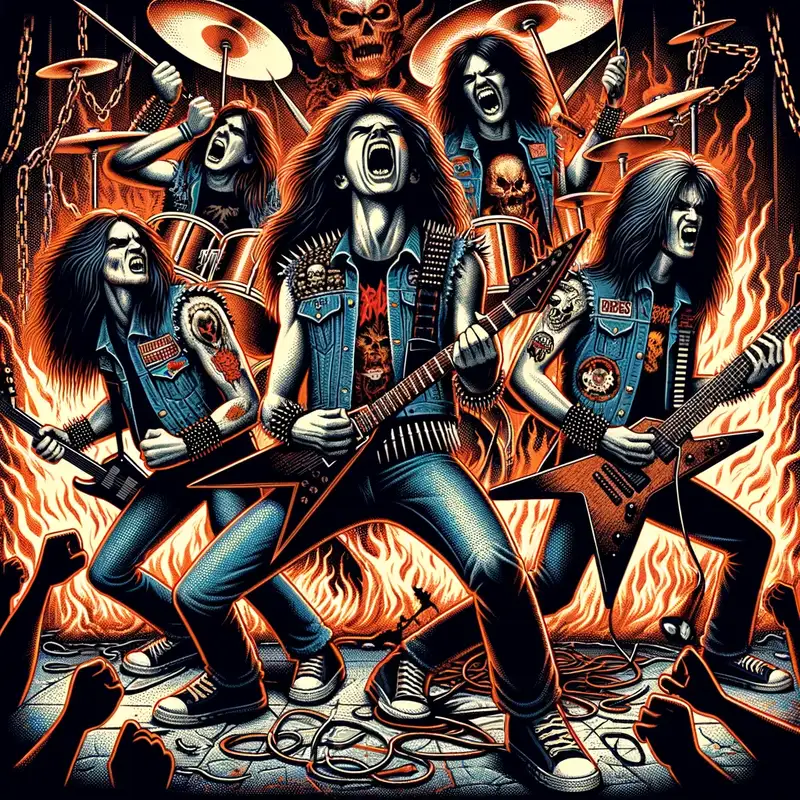Glam Metal

Glam metal, also known as hair metal or pop metal, emerged in the late 1970s and peaked in the 1980s. This subgenre of hard rock is best known for its flamboyant fashion, anthemic hooks, and a sound that blended heavy metal’s power with the melody of pop.
Table of Contents
Historical Context
Glam metal’s roots can be traced back to the glam rock movement of the early 1970s, epitomized by artists like David Bowie and T. Rex. This British movement merged rock music with flamboyant fashion, theatrics, and a hint of androgyny. As the decade progressed, the glam aesthetic crossed the Atlantic and merged with the heavier sounds of American hard rock.
Key Characteristics
Glam metal is characterized by:
- Visual Flair: Bright colors, makeup, spandex, and, of course, big hair became synonymous with the genre.
- Anthemic Choruses: Catchy, sing-along hooks were at the heart of glam metal’s appeal.
- Guitar Solos: Virtuosic guitar solos became a staple, showcasing the technical proficiency of the players.
- Romantic and Rebellious Themes: Lyrics often touched on themes of love, rebellion, and the quintessential rock ‘n’ roll lifestyle.
Notable Bands and Albums
Several bands defined the glam metal era, gaining massive commercial success:
- Mötley Crüe: Their 1981 album “Too Fast for Love” set the stage for the glam metal explosion.
- Poison: 1986’s “Look What the Cat Dragged In” became a monumental success.
- Def Leppard: Their 1987 release “Hysteria” blended glam aesthetics with hard rock energy.
- Bon Jovi: With 1986’s “Slippery When Wet”, they presented a slightly more polished take on the genre.
- Guns N’ Roses: While they often distanced themselves from the glam label, their 1987 debut “Appetite for Destruction” featured many of the genre’s hallmarks.
Decline and Revival
By the early 1990s, grunge and alternative rock started to dominate the airwaves, pushing glam metal out of the limelight. Bands like Nirvana and Pearl Jam brought a rawer, more introspective sound that contrasted sharply with glam metal’s flashiness.
However, like many musical styles, glam metal saw a resurgence in popularity in the 2000s, fueled by nostalgia and a new generation of fans. Bands reunited for tours, new albums, and even musicals like “Rock of Ages” celebrated the genre’s heyday.
Legacy and Influence
Though often derided by critics during its peak, glam metal’s influence is undeniable. Beyond its direct musical contributions, it:
- Broadened the Visual Landscape: Glam metal paved the way for artists in other genres to embrace flamboyant and theatrical fashion.
- Popularized the Power Ballad: Tracks like “Every Rose Has Its Thorn” by Poison and “I Remember You” by Skid Row showed that heavy bands could have a softer side.
- Influenced Modern Acts: Many contemporary rock bands cite glam metal acts as key influences.
Glam metal, with its blend of fashion, theater, and rock ‘n’ roll, stands as one of the most iconic movements in music history.


